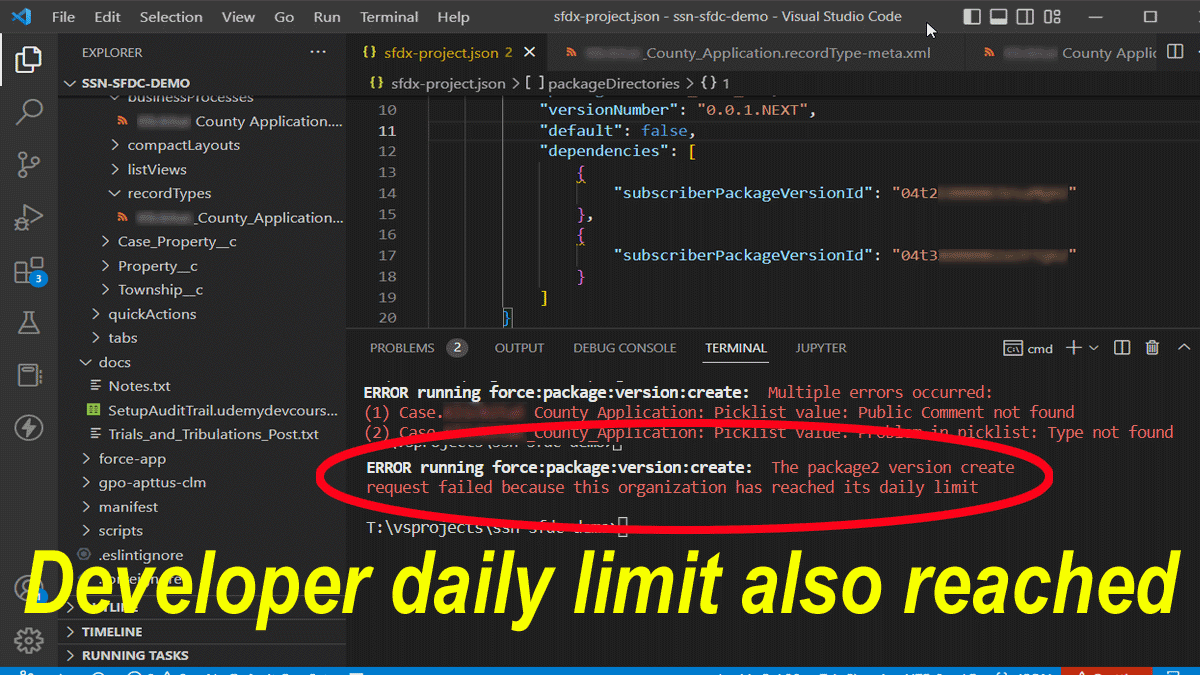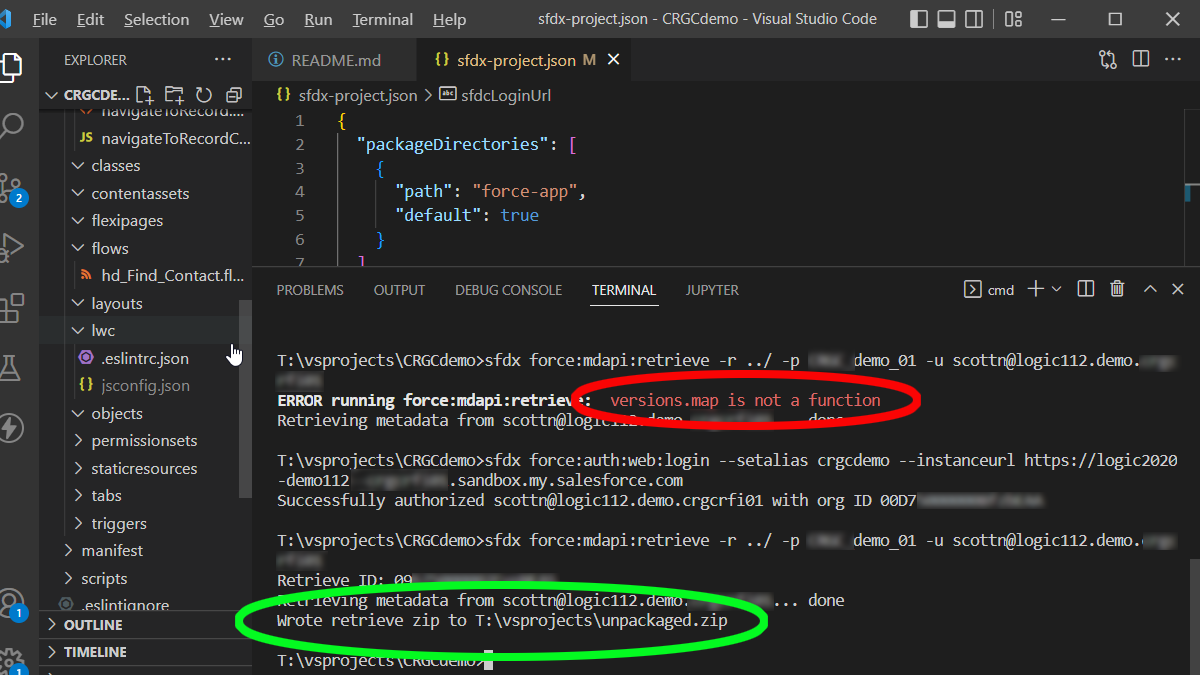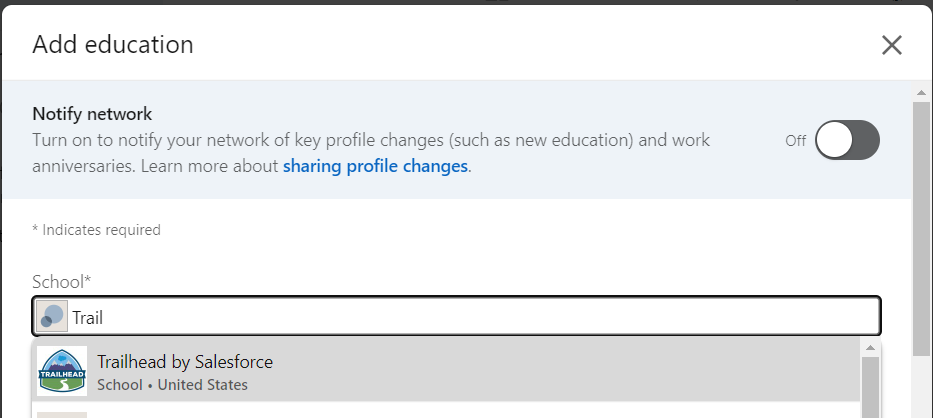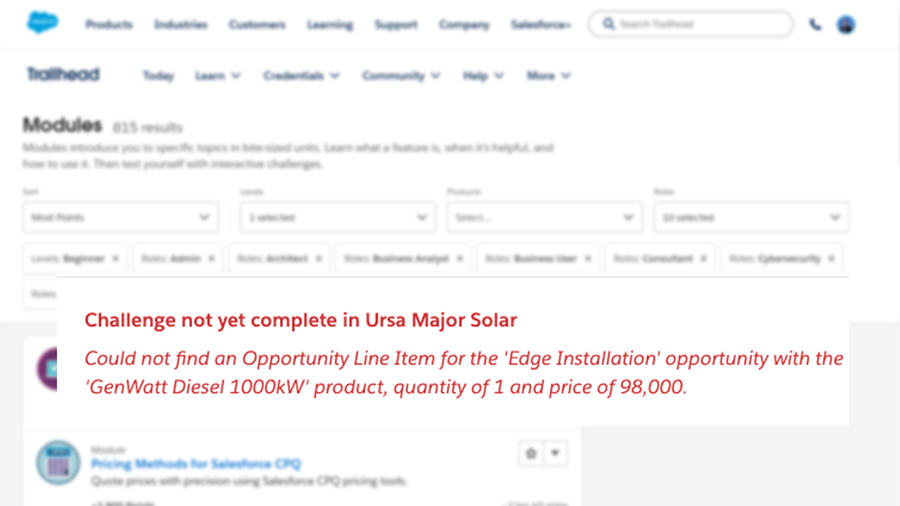(Formerly titled SOLVED! sfdx force:package:version:create -p error: We couldn’t retrieve the design time component information for component)
Now and then I find myself looking for what I expect to be a simple set of steps for what seems to be a common need and instead wind up on a Google journey that is frustrating as all heck. I hit a double-header in this area over the weekend (ironically, following the steps from my own post Get Hands-on with VS Code, Salesforce DX and Packages), and while the second annoyance is still annoying me the first part was resolved and I’m sharing that here. While I won’t make you repeat all the steps I went through to complete a 5 minute task in as many hours, I will share the path before the conclusion (tldr;).
Problem: running force:package:version:create -p to create an unlocked package for an app that has a dependency on a managed package results in an error “We couldn’t retrieve the design time component information for component [foo:bar]”.
Ok, simple enough. Add the managed package as a dependency. GiMF, so off I go and find https://salesforce.stackexchange.com/questions/236881/how-do-you-create-a-package-version-with-dependencies-on-both-2gp-and-1st-gen-ma which usefully points out I need to add the package as dependancy and some examples of what it looks like. Hmmm. I note a key requirement is the package ID. There examples clearly show the ID but no where in the thread does it mention how to get the ID. Down the search engine rabbit hole again to find https://developer.salesforce.com/docs/atlas.en-us.222.0.sfdx_dev.meta/sfdx_dev/sfdx_dev_unlocked_pkg_config_file.htm, which tells me exactly how to find it for my own packages, but not a hint of how to do this for a package from AppExchange. Continuing on… I find how to find the info using SOQL at https://developer.salesforce.com/docs/atlas.en-us.sfdx_dev.meta/sfdx_dev/sfdx_dev_unlocked_pkg_extract_dependency_info.htm, but, alas, still only good for my own packages.
Eventually I found this command (and, in all honesty, I was so frustrated by then that I lost the link where I found it):
sfdx force:package:installed:list -u [alias to org that has managed packaged installed]
Which rendered:
ID Package ID Package Name Namespace Package Version ID Version Name Version ------------------ ------------------ -------------------------- ------------ ------------------ ----------------- -------- 0A375000000GsstCAC 0332E000000U76DQAS Launch Flow Modal sf_flowmodal 04t2E000003VsuMQAS Launch Flow Modal 1.14.0.1 0A375000000Gss2CAC 03330000000wDAbAAM Salesforce Connected Apps sf_com_apps 04t30000001DUvrAAG Winter '16 1.7.0.1 0A375000000GssoCAC 0333X0000006XwlQAE Enhanced Approval Requests ear 04t3X000002xUYTQA2 Summer 2021 1.10.0.1
And yay, I had what I needed to create the entry depencies entry for managed packages used by an unlocked package:
"dependencies": [
{
"subscriberPackageVersionId": "04t2E000003VsuMQAS"
},
{
"subscriberPackageVersionId": "04t3X000002xUYTQA2"
}
]
Basically. I actually would have preferred to find the 0Ho ID so I could also just use LATEST instead of the last digit of the version, but alas, time to move on to the remaining issue(s):

Which I am stopping on today because:

In summary, to add a managed package as a dependency for an unlocked package:
With an org where the managed package is installed run the following:
sfdx force:package:installed:list -u [alias to org that has managed packaged installed]
Then add this to your sfdx-project.json under packageDirectories that contains your package:
"dependencies": [ { "subscriberPackageVersionId": "04tPACKAGEID" } ]
Where 04tPACKAGEID is the value returned from the CLI command.
© Scott S. Nelson





